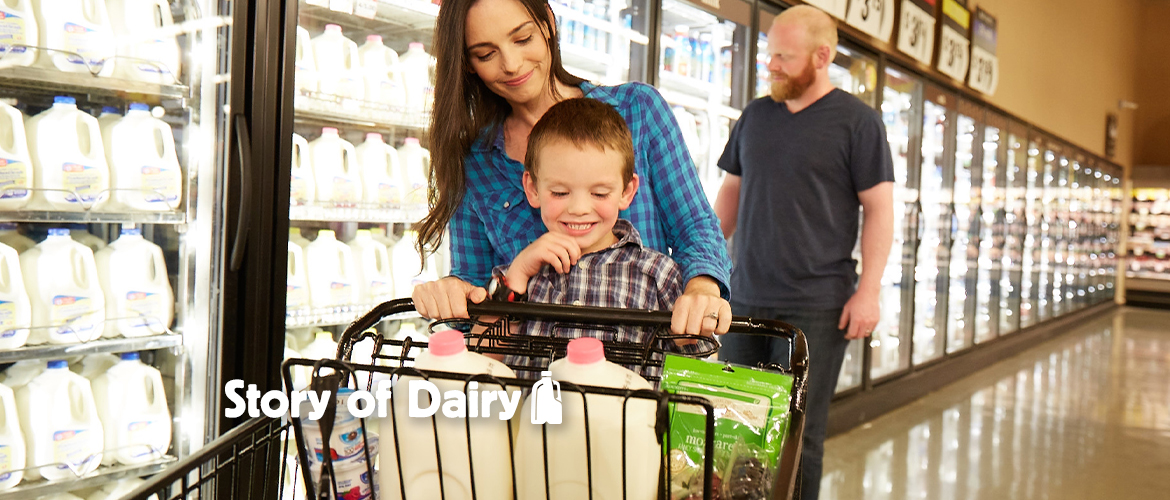Our fifth and final stop in the journey of milk from the farm to the table is the place where you buy your milk and dairy foods. This is the part of the journey that ultimately ends with delicious milk, cheese and yogurt on your dinner table and in your refrigerator. And that means the journey of milk ends with you – yes, you have a role to play in keeping milk safe and fresh!
You’ll recall from the last article, milk is pasteurized and packaged at dairy processing facilities and is then ready for shipment. Distribution companies pick up milk and other dairy products in refrigerated trucks from the local processing plants and deliver them to grocery stores, convenience markets, gas stations, schools and other retail outlets.
Now, more than ever, the choices available in your grocery’s dairy aisle might be just a bit overwhelming. Do you choose the red cap or the blue cap, the organic or the regular, chocolate or lactose-free? Not to mention all the options when it comes to purchasing cheese and yogurt!
As a mom and registered dietitian, cow’s milk is a nutritional bargain at less than 25 cents per 8-ounce glass, on a gallon basis. Especially when you think of all the liquid assets inside! Cow’s milk provides great taste plus nine essential nutrients – it’s how nature does wellness. Whether it’s regular, organic, chocolate or lactose-free milk, cheese or yogurt – all are wholesome, safe and nutritious.
It is important to keep in mind that milk and other dairy foods are perishable. To preserve the safety and quality, the following tips are recommended:
- Refrigerate milk and other dairy foods at 40 degrees Fahrenheit or less as soon as possible after purchase. That means picking up your milk last during your shopping trip and heading straight home or using an insulated bag or cooler in your trunk.
- Return dairy products to the refrigerator immediately after serving or utilizing in recipes, instead of leaving it out on the table or counter.
- Keep milk containers closed to prevent the absorption of other flavors – an absorbed flavor changes the taste, but the milk is still safe.
- Protect milk from exposure to light. Light can reduce the riboflavin (a vitamin) content of milk and cause off-flavors.
- If properly cared for, milk generally stays fresh two to three days after the printed date on the carton. Yogurt can stay fresh for up to a week after the date on the container.
Did you miss an article in this series? We’ve got you covered!
- The Story Of Dairy: From The Farm To Your Fridge
- The Story Of Dairy: Growing Food For Cows
- The Story Of Dairy: Caring For The Cows Who Make Your Milk
- The Story Of Dairy: Transporting Milk
- The Story Of Dairy: What Happens When We Process Milk
Still have dairy questions you’d like answered? Please send us a message on Facebook or email info@dairymax.org.




